About patriotism and realism
There are two opinions about today's Russian cosmonautics in the Russian-speaking Internet: “we are the first in space” and “we are the last in space”.
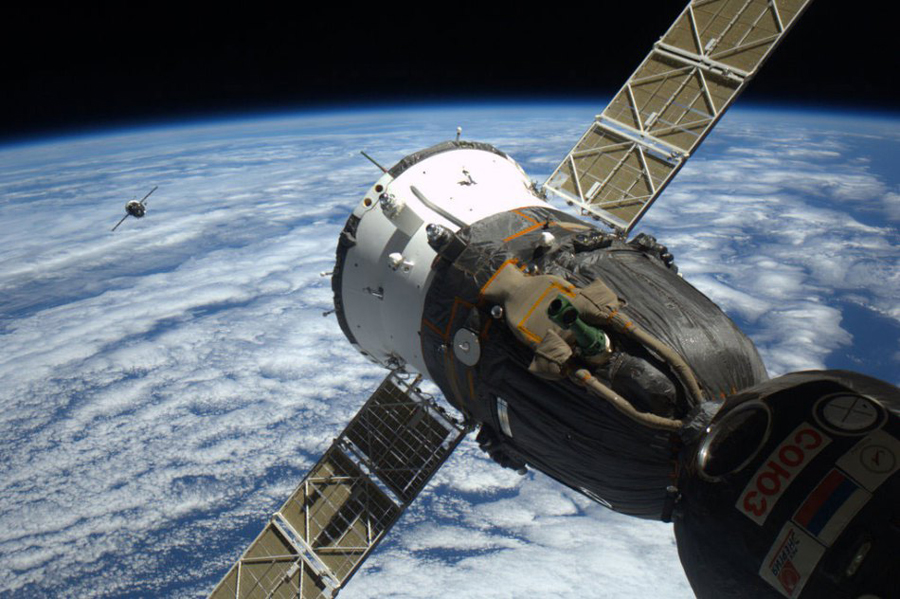
Everything is quite clear with the “latter”: if you are not interested in astronautics, and form a superficial look from viewing popular media, then you will see pictures of exploding rockets and corruption scandals. For example, last year's fall of Proton overshadowed, in the information field, the remaining three dozen successful launches. The same goes for fanning news about corruption in Roskosmos. Of course, it exists, but, despite it, the industry works and develops, although not as fast as we would like.
Today I wanted to talk about "we are ahead of the rest." Quite objective indicators: the leading position in the global space launch market, the stably reliable provision of the ISS manned program, the export of rocket engines, rockets and booster blocks, allow Russia to be on the list of leading world space powers. But those who know these facts, hit the opposite extreme - they believe that Roscosmos occupies the top step of the space pedestal.
For those who are so mistaken, I will give simple facts that do not fit with the title of leader:
Firstly: Russia does not have a single operating spacecraft outside the low Earth orbit. Secondly: for the entire time of its existence, the Russian Federation made only two attemptsconquering interplanetary space, and both ended in the Pacific Ocean. According to the interplanetary program, even China and India bypass Russia. Thirdly: in the general world market of space services, Russia takes 2-3% (if this is counted with launches). Fourth: 75% of electronic components in Russian spacecraft are of foreign manufacture (mainly the USA and Europe). Fifth, one of the most long-lived domestic devices - Resource-DK - exchanged only the eighth year, which, compared to Voyager, is just a mockery.
For clarity, you can take a look here at this infographic compiled in the community of Open Space Vkontakte:

Large size .
It is outdated for a year, but in 2013 the devices of the USA (LADEE, MAVEN), India (Mars Orbiter mission), Europe ( Gaia ) and two China (Chang'e-3 and Yutu) were added. When drawing up the scheme, we had to add rockets in the inset on the right, so that Russia had an occasion to remember - some European devices were launched by our missiles. Accelerating blocks "Frigate" near Venus and Mars are now the most distant products of Russia in space. Of course, they are not active and in fact are man-made asteroids.
But today I want to talk in more detail about one favorite topic of urapatriots - about Russian engines, without which American missiles supposedly do not fly. In the current political situation, the contradictions between the countries intensified again, the word “sanctions” became fashionable, and they started talking about curtailing Russian-American space cooperation not only on the Internet, but also on the US Senate and the Security Council of the Russian Federation.
A new wave of noise rose when the Americans announced the cessation of the supply of their electronic components for Russian military satellites. Immediately in the minds of the “patriots” thoughts arose about a “symmetrical response” that resulted in a chatter: “we will stop delivering our rocket engines, we will not carry the Americans to the ISS, and NASA will immediately bend.”
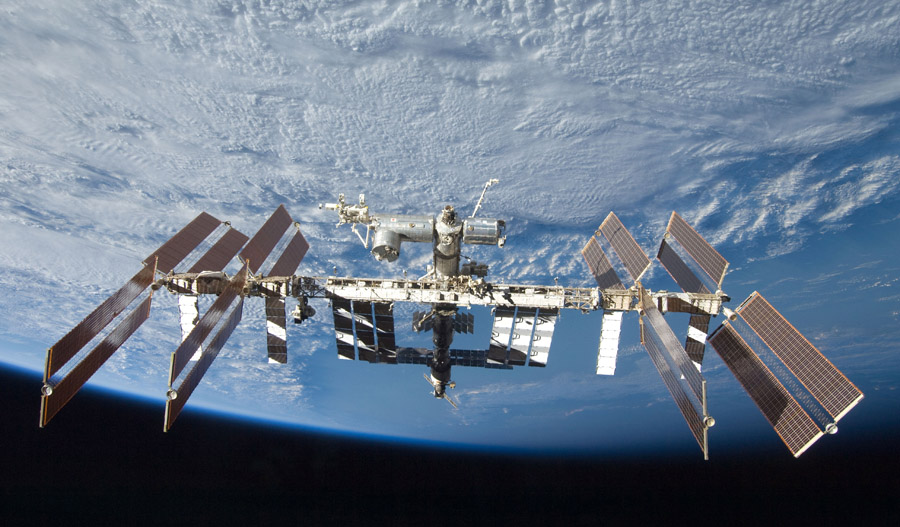
We will deal with the validity of such reasoning.
Today, two Russian enterprises supply engines for the American space program. This Khimki NPO Energomash with RD-180 , and Samara NTK them. N.D. Kuznetsova with the NK-33 . The first engine is the "halved" RD-170, which was created for the Energy-Buran program - the most powerful rocket engine in history. The second - the engine created for the Soviet lunar manned missile "H1" - is still the best in terms of weight / thrust.
To check how much the US space program depends on Russian engines, it is enough to compare the main “workhorses” of the American space. To do this, I prepared a visual diagram with medium and heavy rockets, which now serve NASA and the Pentagon. The scale of the images is not respected, listing in increasing order, from light to heavy.
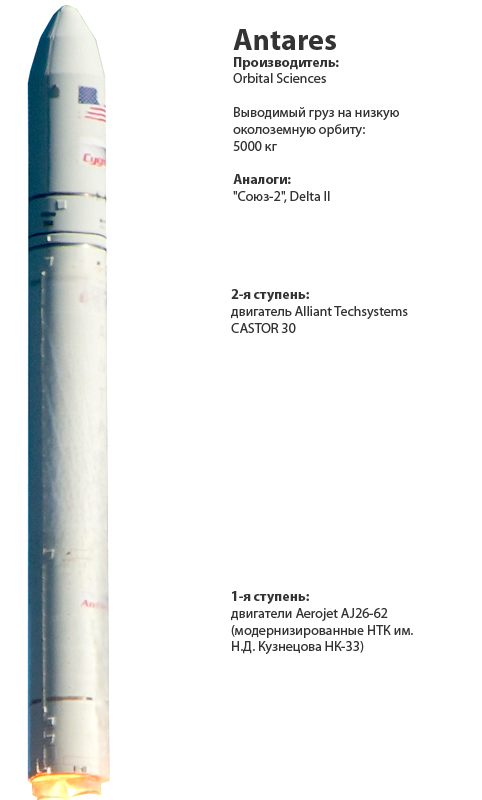
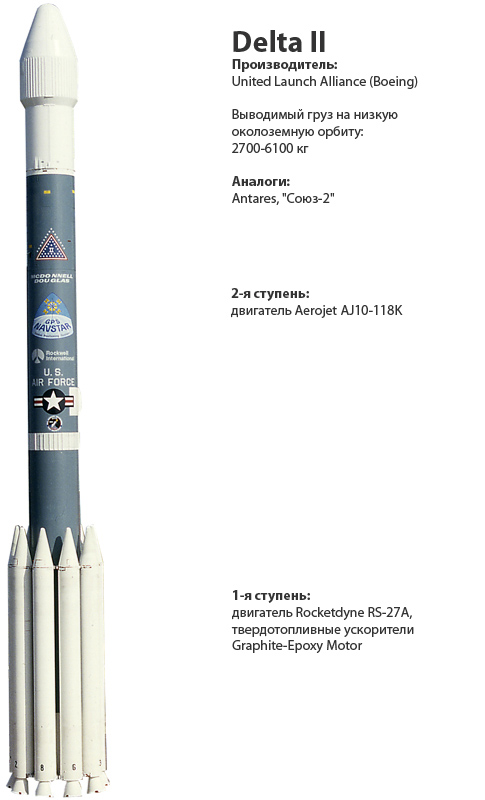
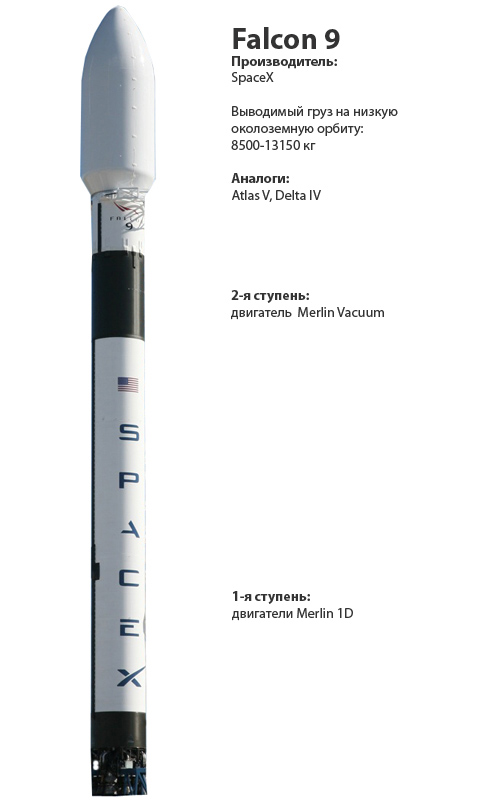
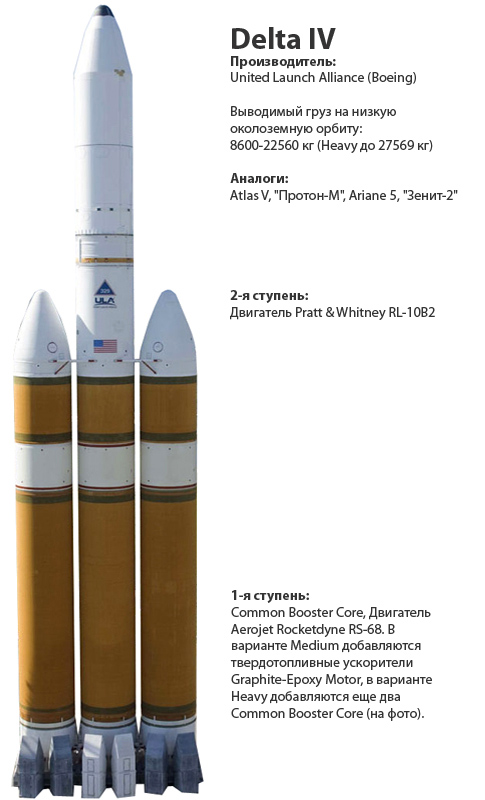
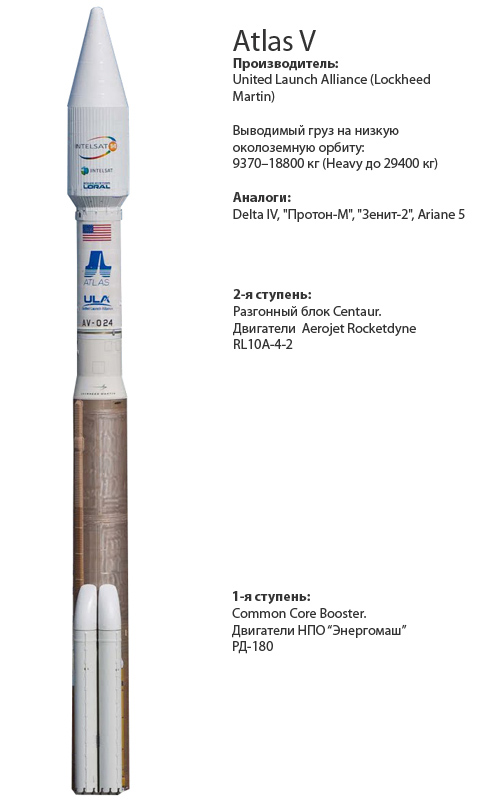
As you can see, only the lightest (from medium) and the heaviest rocket depend on Russian engines. Therefore, the cessation of their supplies will not cause significant harm to overseas astronautics, but will deprive Russian enterprises of substantial income. For example, 1 NK-33 costs 1-1.5 million dollars. For each Antares launch, they need two pieces. Largely thanks to the American space program, the production of these engines is resumed in Samara, although initially Orbital Sciences counted only on those units that were stored “in oil” from the time of the lunar race.
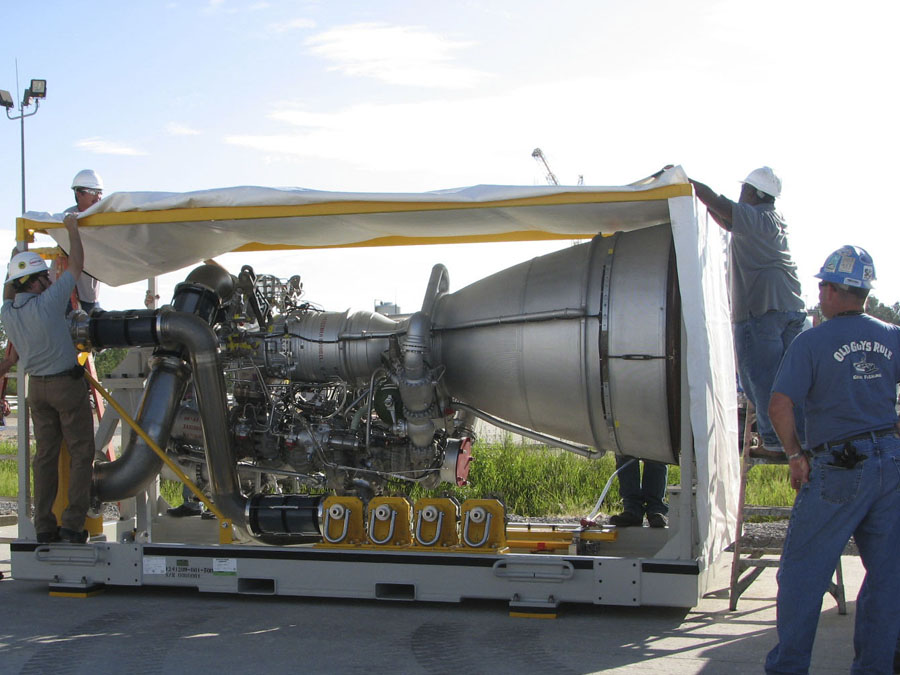
RD-180 is ten times more expensive, and in general, it now fully loads the capacity of Energomash. These engines are so good that Orbital Sciences sued the United Launch Alliance because of them, accusing the latter of monopoly. The reason for this passion for Khimki products was best expressed by the chief executive officer of the United Launch Alliance, Michael Gass: “ In Russia, they did what our textbooks say:“ It's impossible. ” But here we are talking about the price / quality / efficiency ratio, and not that there are no rocket engines left in the United States.
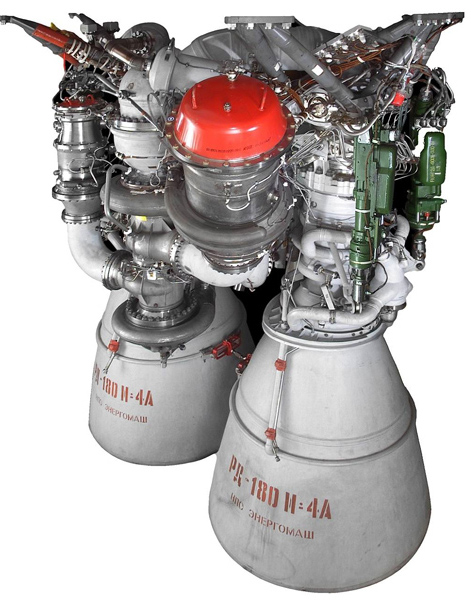
Suppose Russia stops delivering engines, well, our “patriots” will be happy for fifteen minutes and forget. And then the money NASA and the Pentagon will go to the American economy, to more expensive, but their own engines, and to develop new ones. Now, they are entering the Russian economy, supporting and developing our industry.
Moreover, stopping the export of engines for ULA and Orbital Sciences will play into the hands of their competitor, SpaceX, which recently broke into the space launch market and intends to reduce the share of Roscosmos on it. That is, having stopped deliveries of engines, Russia will manage to kick itself twice.
In general, space cooperation over the past two decades is perhaps one of the best and most effective examples of joint work between the United States and Russia since the time of the Anti-Hitler Coalition. They pay for engines, for flights of their astronauts into orbit, install our scientific devices for free on their research vehicles on Mars and the Moon, study the Universe together in the Radioastron project ... Therefore, to destroy such an interaction for the sake of the political situation would be a big mistake, as Whatever lovers of kvass, matryoshka and balalaika would like.
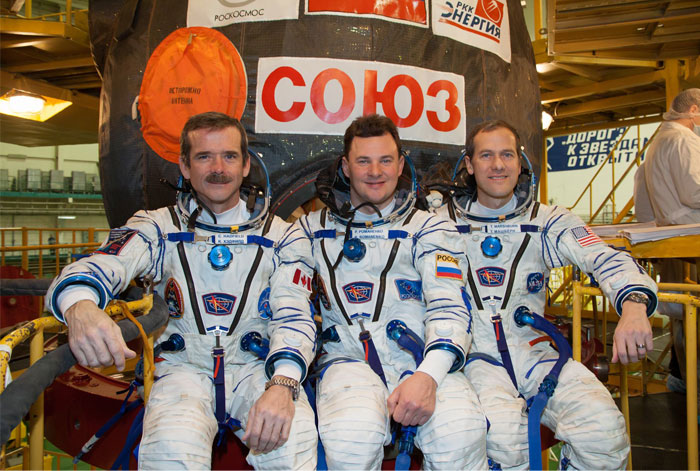

Everything is quite clear with the “latter”: if you are not interested in astronautics, and form a superficial look from viewing popular media, then you will see pictures of exploding rockets and corruption scandals. For example, last year's fall of Proton overshadowed, in the information field, the remaining three dozen successful launches. The same goes for fanning news about corruption in Roskosmos. Of course, it exists, but, despite it, the industry works and develops, although not as fast as we would like.
Today I wanted to talk about "we are ahead of the rest." Quite objective indicators: the leading position in the global space launch market, the stably reliable provision of the ISS manned program, the export of rocket engines, rockets and booster blocks, allow Russia to be on the list of leading world space powers. But those who know these facts, hit the opposite extreme - they believe that Roscosmos occupies the top step of the space pedestal.
For those who are so mistaken, I will give simple facts that do not fit with the title of leader:
Firstly: Russia does not have a single operating spacecraft outside the low Earth orbit. Secondly: for the entire time of its existence, the Russian Federation made only two attemptsconquering interplanetary space, and both ended in the Pacific Ocean. According to the interplanetary program, even China and India bypass Russia. Thirdly: in the general world market of space services, Russia takes 2-3% (if this is counted with launches). Fourth: 75% of electronic components in Russian spacecraft are of foreign manufacture (mainly the USA and Europe). Fifth, one of the most long-lived domestic devices - Resource-DK - exchanged only the eighth year, which, compared to Voyager, is just a mockery.
For clarity, you can take a look here at this infographic compiled in the community of Open Space Vkontakte:

Large size .
It is outdated for a year, but in 2013 the devices of the USA (LADEE, MAVEN), India (Mars Orbiter mission), Europe ( Gaia ) and two China (Chang'e-3 and Yutu) were added. When drawing up the scheme, we had to add rockets in the inset on the right, so that Russia had an occasion to remember - some European devices were launched by our missiles. Accelerating blocks "Frigate" near Venus and Mars are now the most distant products of Russia in space. Of course, they are not active and in fact are man-made asteroids.
But today I want to talk in more detail about one favorite topic of urapatriots - about Russian engines, without which American missiles supposedly do not fly. In the current political situation, the contradictions between the countries intensified again, the word “sanctions” became fashionable, and they started talking about curtailing Russian-American space cooperation not only on the Internet, but also on the US Senate and the Security Council of the Russian Federation.
A new wave of noise rose when the Americans announced the cessation of the supply of their electronic components for Russian military satellites. Immediately in the minds of the “patriots” thoughts arose about a “symmetrical response” that resulted in a chatter: “we will stop delivering our rocket engines, we will not carry the Americans to the ISS, and NASA will immediately bend.”

We will deal with the validity of such reasoning.
Today, two Russian enterprises supply engines for the American space program. This Khimki NPO Energomash with RD-180 , and Samara NTK them. N.D. Kuznetsova with the NK-33 . The first engine is the "halved" RD-170, which was created for the Energy-Buran program - the most powerful rocket engine in history. The second - the engine created for the Soviet lunar manned missile "H1" - is still the best in terms of weight / thrust.
To check how much the US space program depends on Russian engines, it is enough to compare the main “workhorses” of the American space. To do this, I prepared a visual diagram with medium and heavy rockets, which now serve NASA and the Pentagon. The scale of the images is not respected, listing in increasing order, from light to heavy.





As you can see, only the lightest (from medium) and the heaviest rocket depend on Russian engines. Therefore, the cessation of their supplies will not cause significant harm to overseas astronautics, but will deprive Russian enterprises of substantial income. For example, 1 NK-33 costs 1-1.5 million dollars. For each Antares launch, they need two pieces. Largely thanks to the American space program, the production of these engines is resumed in Samara, although initially Orbital Sciences counted only on those units that were stored “in oil” from the time of the lunar race.

RD-180 is ten times more expensive, and in general, it now fully loads the capacity of Energomash. These engines are so good that Orbital Sciences sued the United Launch Alliance because of them, accusing the latter of monopoly. The reason for this passion for Khimki products was best expressed by the chief executive officer of the United Launch Alliance, Michael Gass: “ In Russia, they did what our textbooks say:“ It's impossible. ” But here we are talking about the price / quality / efficiency ratio, and not that there are no rocket engines left in the United States.

Suppose Russia stops delivering engines, well, our “patriots” will be happy for fifteen minutes and forget. And then the money NASA and the Pentagon will go to the American economy, to more expensive, but their own engines, and to develop new ones. Now, they are entering the Russian economy, supporting and developing our industry.
Moreover, stopping the export of engines for ULA and Orbital Sciences will play into the hands of their competitor, SpaceX, which recently broke into the space launch market and intends to reduce the share of Roscosmos on it. That is, having stopped deliveries of engines, Russia will manage to kick itself twice.
In general, space cooperation over the past two decades is perhaps one of the best and most effective examples of joint work between the United States and Russia since the time of the Anti-Hitler Coalition. They pay for engines, for flights of their astronauts into orbit, install our scientific devices for free on their research vehicles on Mars and the Moon, study the Universe together in the Radioastron project ... Therefore, to destroy such an interaction for the sake of the political situation would be a big mistake, as Whatever lovers of kvass, matryoshka and balalaika would like.

